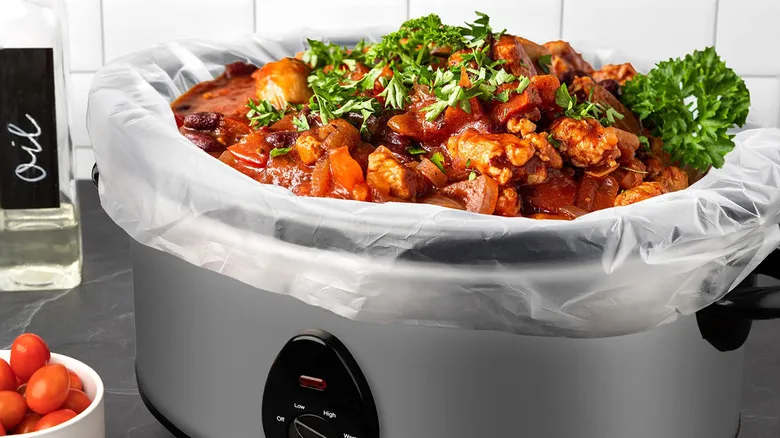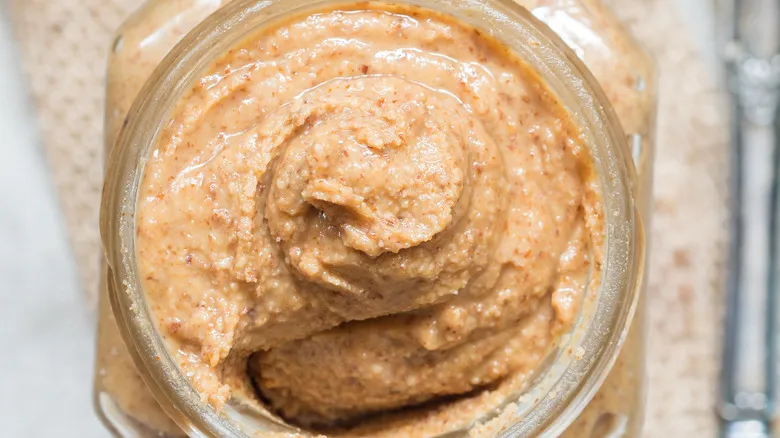Guard the cork while you open the foil and cage
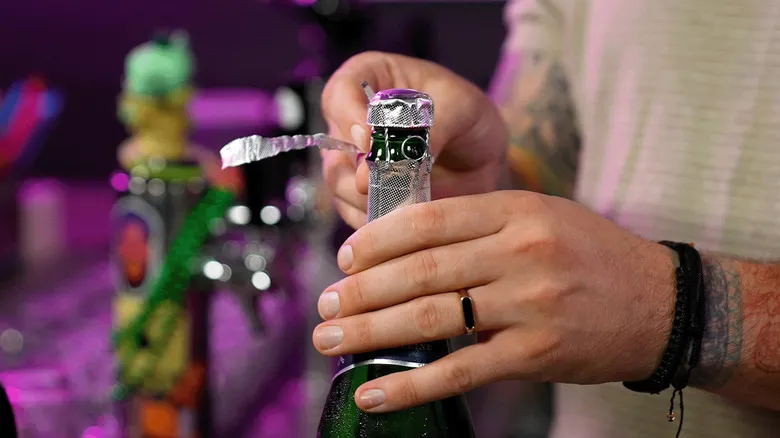
Before you can uncork the bottle, there are a few essential steps to follow. Each bottle of sparkling wine or Champagne is covered with a foil wrapper designed to shield the cork from light and moisture, while also providing an extra layer of sealing. Lockwood recommends starting by locating the foil tab, which allows for easy removal of the foil and reveals the wire cage underneath.
Until now, the cork has been secured by a wire cage, but when you're ready to open the bottle, that cage needs to be removed. Locate the twisted metal on the side of the cage and turn it counter-clockwise to loosen it from the cork. "It's important to keep your thumb firmly on top of the bottle," Lockwood advises while opening the cage. This precaution adds an extra layer of safety and helps prevent the cork from popping unexpectedly once the cage is released.
Feel the cork to identify how loose it is
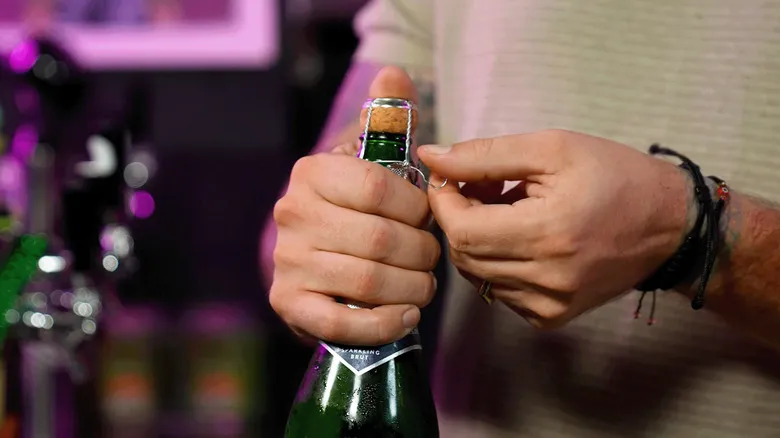
As you begin to open the cage, it will detach from the cork, but it's important to gauge how loose the cork is before fully removing the cage. "We want to get a sense of the cork's tightness," Lockwood explains, noting that the cork's looseness can differ—some come out easily while others require more effort. "I gently ease off [my thumb] to observe how the cork reacts," Lockwood adds, keeping the cage in place. Once you determine that the cork isn't ready to pop, you can safely take off the cage.
Make sure to keep at least one finger on the cork as you open and remove the cage, and even after the cage is off, for safety reasons. "The wine cork will gradually start to release until it fully pops," Lockwood warns. "A lot of movement can also trigger this." He recommends switching hands while removing the cage to ensure that the cork is consistently covered by at least one finger and that you maintain a secure grip.
Hold onto the cork while popping the bottle
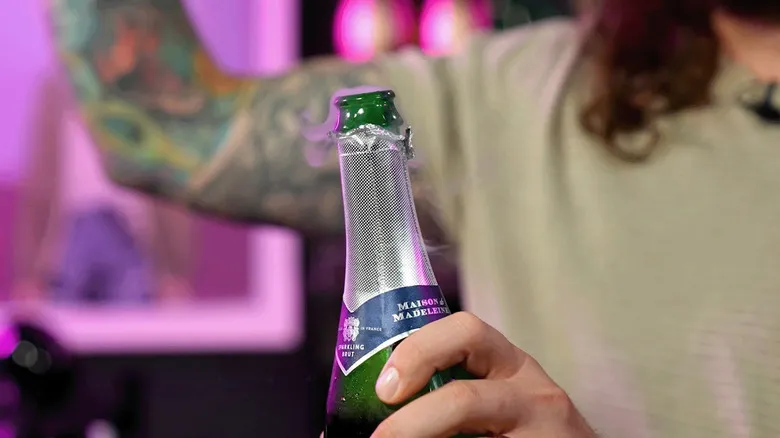
Never allow the cork to shoot out of the bottle. "I wouldn't advise that in nearly any situation," Lockwood explains, emphasizing the importance of holding onto the cork while opening the bottle to prevent any damage and ensure everyone's safety. Grip the cork and gently twist it; you should start to feel the pressure easing. At that point, hold the cork firmly while keeping it away from your face (and others'), and carefully remove it from the bottle.
You should hear a distinct "pop" sound. "If you plan to shake the bottle and create a celebratory spray, just remember to shake it after you've removed the cork, not before," Lockwood warns, as the pressure from the bubbles could cause the cork to fly off. Once the bottle is opened and you've confirmed that nothing has spilled, you can proceed to pour the Champagne.
High-end Champagne bottles have a slightly different technique

The method for taking off the foil and cage is consistent across all sparkling bottles, but when it comes to a premium, aged Champagne, a different technique is needed for cork removal. "We want to preserve the wine's integrity," Lockwood explains. "Opening too quickly could risk damaging the wine."
Instead of twisting and gripping the cork as you would with any other bottle, keep your thumb on it and gently nudge it to allow the pressure to release gradually rather than all at once. You shouldn't hear a popping noise. "It's important to listen for the air escaping," Lockwood notes, mentioning that some bottles may take a bit longer to open, humorously referring to the released pressure as an "angel fart." Once the pressure has fully dissipated, the cork should come out quietly, and you can pour the Champagne. Cheers!
Recommended

Why Scuppernong Wine Is A North Carolina Favorite

How To Transform Leftover Wine Into Red Wine Vinegar
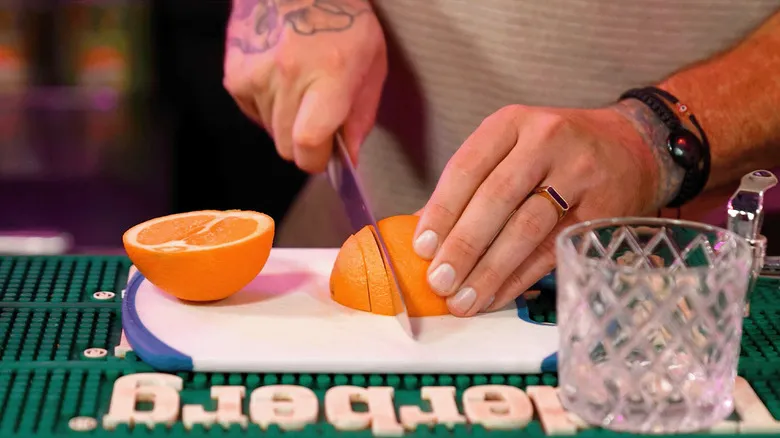
How To Make Sangria - You're Doing It All Wrong
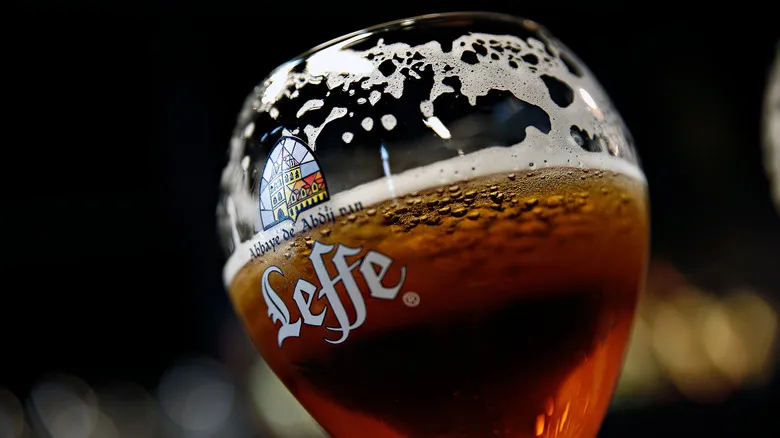
What Exactly Makes A Beer A Tripel?
Next up


